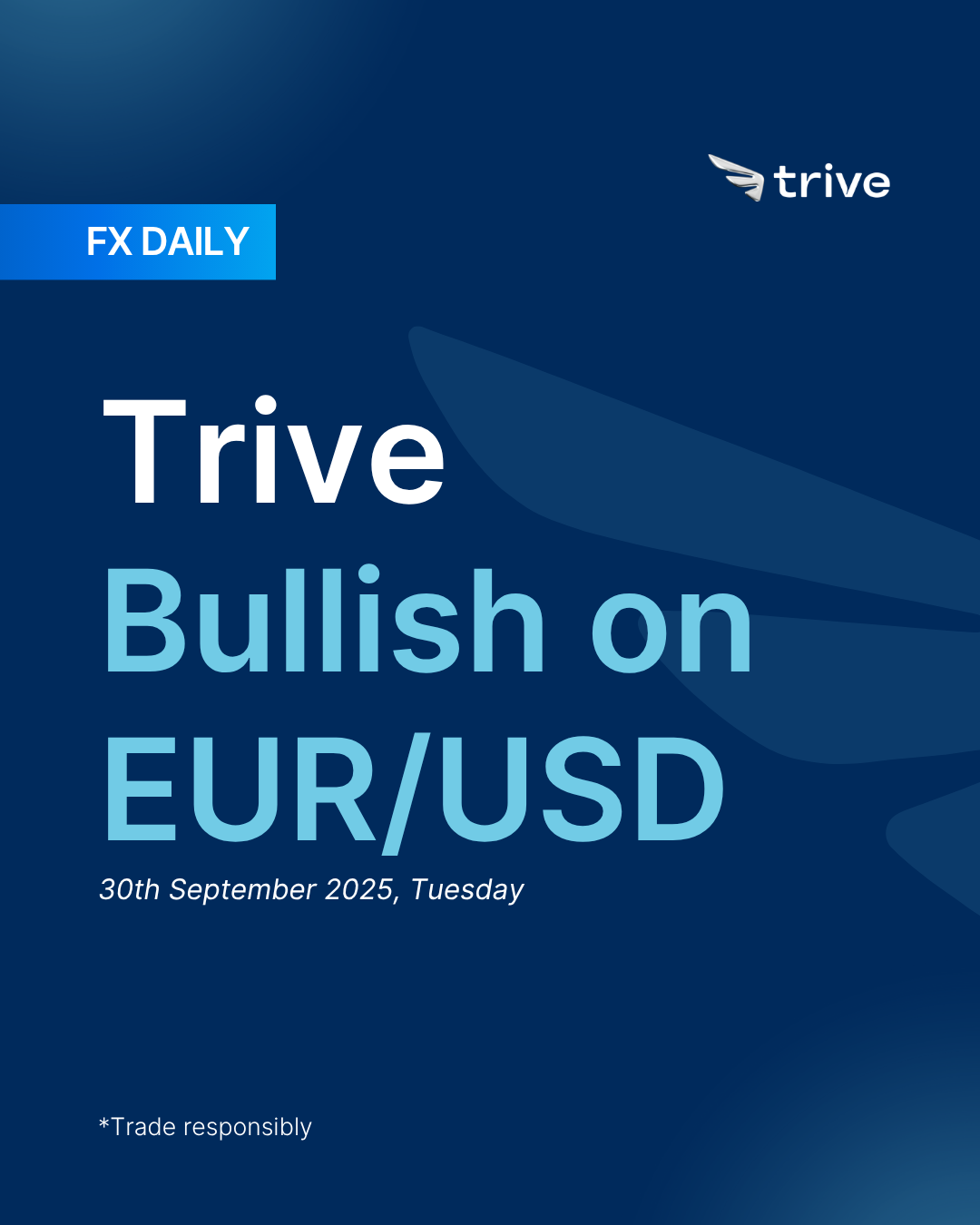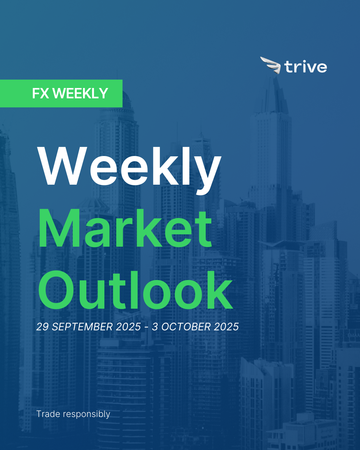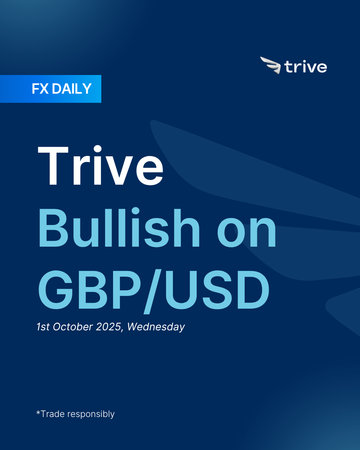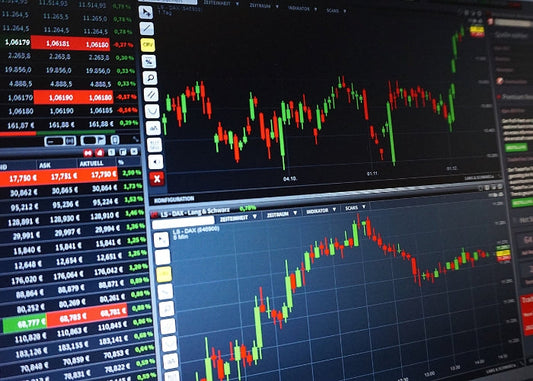FX Daily: Trive Bullish on EUR/USD

The euro slipped below 1.1700 on weak French PMIs, a soft German IFO, and strong US data, but the move was largely dollar-driven. Inflation expectations ticked higher, ECB officials kept a steady “higher-for-longer” stance, and markets still see fewer cuts than the Fed. Structurally, policy differentials should compress as the Fed eases faster, supporting the euro over time. External balances and stable spreads also underpin resilience. Near term, USD strength may linger with data momentum, but unless euro weakness becomes consistent, we see scope for recovery. We stay bullish EUR/USD, preferring to buy dips.
EUR: Short term strength
The Euro experienced a sharp reversal of fortunes, starting the week on a firm footing before succumbing to a wave of dismal domestic data and a resurgent US Dollar. The single currency initially climbed towards 1.1820 on early-week dollar weakness, but sentiment soured on Tuesday after a disastrous French PMI report sent EUR/USD tumbling. A surprise expansion in Germany’s services sector offered brief relief, yet the reprieve faded quickly. A shockingly weak German IFO Business Climate reading on Wednesday confirmed the darkening outlook and pushed the pair lower, and Thursday’s barrage of strong US data triggered a powerful dollar rally that drove the Euro decisively below 1.1700 to a monthly low. A modest bounce on Friday reflected dollar consolidation rather than improving Eurozone sentiment, leaving the Euro to end a bruising week defined by a clear negative divergence in economic momentum versus the United States.
Flash PMI data on Tuesday signaled mounting trouble. France disappointed across the board, with Manufacturing, Services, and Composite readings all missing expectations, falling from the prior month, and remaining in contraction, and the report cited a “tense domestic political situation” as a drag on activity. Germany presented a mixed picture, with manufacturing still weak and contractionary, while services unexpectedly moved into expansion and briefly helped the Euro pare losses. The broader Eurozone print echoed this German split, while commentary stressed the bloc was still “a long way from seeing any real momentum.” The German IFO report on Wednesday added to the gloom as the Business Climate index fell sharply to 87.7 versus 89.3 expected, snapping a six-month run of improvements; both Current Conditions and Expectations missed, with analysts pointing to US tariffs, a stronger euro, and domestic policy uncertainty as headwinds to German optimism. On Friday, the ECB’s Survey of Consumer Expectations showed inflation forecasts rising, with the one-year expectation up to 2.8% from 2.6% and the five-year to 2.2% from 2.1%, though markets largely ignored the release.
The ECB remained on the sidelines, and officials offered little new guidance that might shift policy expectations. Over the weekend, Martins Kazaks said more data would be available by the December meeting, and Gediminas Šimkus suggested a December cut was needed. On Wednesday, Piero Cipollone struck an optimistic note by describing the economy as “in a good place” with “very balanced” inflation risks, and Peter Kažimír said on Thursday that the inflation goal has been met. The calm tone and lack of urgency contrasted with the volatile repricing of the Fed’s path after stronger US data.
Trade and geopolitics provided a steady headwind. An ECB blog post on Monday noted that Eurozone consumers expect tariffs to hurt the economy and are already adjusting spending, and the weak German IFO report midweek was also tied in part to concerns over US tariffs. Rhetoric around Russia and Ukraine was elevated after US President Trump told the UN that NATO should shoot down Russian aircraft that violate airspace and suggested Ukraine could “win” the war, but the direct impact on European assets was limited, with analysts noting little evidence that investors were pricing in a major escalation.
Market mood reflected a widening gap between a resilient US economy and a sputtering Eurozone. The one-two punch of weak French PMIs and the dismal German IFO reading damaged confidence in the region’s growth outlook, leaving the Euro vulnerable to the data-driven US Dollar surge later in the week. The small Friday rebound looked more like a pause in the dollar move than a shift in the Euro’s underlying story.
The euro began the week on solid footing before being knocked back by weak French PMIs and a sharp German IFO miss, which highlighted uneven growth momentum. Yet the move was amplified more by the surge in US data and Fed repricing than by a structural euro story. Inflation expectations in the ECB’s survey ticked higher, fragmentation risks remain contained, and officials have not rushed toward an easing signal. Markets have also nudged the expected interest rate path upward, which keeps the ECB’s higher-for-longer stance in play.
Near term, neutral/weak bullish. Despite the poor data headlines, the euro retains support from steady ECB guidance, firmer inflation expectations, and the repricing of the path toward higher for longer policy. The dollar’s burst of strength was largely event-driven, and unless Eurozone releases form a consistent run of weakness, the single currency has scope to recover. The key watchpoints are whether incoming US data extend dollar momentum or allow the euro some room to rebuild.
A large quantity of economic data and risk events lies ahead, and ultimately the euro’s near-term direction will be driven by how those releases shape the balance between the Fed and the ECB.
Longer term weak bullish. We keep the medium-horizon tilt constructive, with policy differentials still set to compress as the Fed eventually eases more quickly than the ECB. The euro’s external surplus, stable energy backdrop, and contained sovereign spreads anchor the profile. Only a persistent run of softer inflation and wage data would tilt the ECB more dovish and undermine this stance. If the driver mix flips meaningfully or if policy guidance shifts more dovishly than expected, we will reconsider and lean toward a weaker currency until the data and pricing improve.
USD: Short at rally
The US Dollar staged a powerful mid-week reversal, shaking off early weakness to end the week with significant gains. The DXY began the week drifting lower, extending its post-FOMC decline to a low near 97.20 as a heavy slate of Fed speakers offered cautious commentary but no fresh catalysts. The narrative shifted on Thursday after a run of stronger-than-expected US data. Q2 GDP was revised up to 3.8% from 3.3%, led by a firm upgrade to consumer spending, Durable Goods orders for August jumped 2.9% versus a 0.5% decline expected with core capital goods also beating, and Initial Jobless Claims fell to 218k despite forecasts for an increase. Together, these releases pointed to a resilient economy and challenged the idea of an imminent slowdown. The dollar rallied sharply while Treasuries sold off as traders cut back bets on future Fed rate cuts, and the DXY broke above 98.00 to a weekly high above 98.6. The move paused on Friday when the August PCE inflation report came in exactly as expected, with core PCE up 0.2% month-over-month and 2.9% year-over-year, which matched Chair Powell’s earlier guidance and allowed the dollar to consolidate after its strong rise. Personal income and consumption were both slightly better than expected. Earlier in the week, S&P Global flash PMIs were broadly in line and did not move markets, while New Home Sales on Wednesday rose to 800k versus 650k expected and the August goods trade deficit narrowed noticeably.
Fed communication was mixed. Some officials leaned dovish, with Governor Miran repeating a case for aggressive 50-basis-point cuts and, on Friday, Vice Chair for Supervision Bowman cautioning that the Fed risks already being behind the curve on labor-market weakness and should act decisively and proactively. Others, including Bostic, Musalem, and Hammack, stressed caution about more easing due to inflation concerns, and Goolsbee warned against front-loading cuts based on slowing job data. Chair Powell on Tuesday largely repeated his press-conference message, balancing downside risks to employment with upside risks to inflation and noting that tariff impacts on prices should be a one-time pass-through. After Thursday’s data, markets scaled back easing expectations meaningfully, with the implied probability of another 25-basis-point cut by December dropping from over 70% to around 50%, and the amount of total cuts priced for 2025–2026 reduced as well. Treasury Secretary Bessent criticized the Fed for keeping rates too high for too long and confirmed plans to interview candidates for the Fed Chair position next week.
Trade and geopolitics added noise but did not change the broader story. Late Thursday into early Friday, President Trump announced new tariffs effective October 1, including a 25% tariff on imported heavy trucks, a 50% tariff on cabinets and vanities, a 30% tariff on upholstered furniture, and a headline 100% tariff on branded and patented pharmaceutical products. It was later clarified that the United States would honor a 15% cap for the EU and Japan, leaving the UK to face the full tariff. Tensions around Russia and Ukraine were elevated after President Trump told the UN that NATO should shoot down Russian aircraft that violate airspace and later signaled he was open to allowing Ukraine to use long-range US weapons to strike inside Russia.
Market mood evolved from a listless, negative drift for the dollar early in the week to stronger conviction after Thursday’s data. The subsequent rally reflected a pro-USD reaction to perceived US economic outperformance and a more favorable interest-rate gap, which weighed on US equities. The tariff headlines on Friday generated attention but did not overturn the main theme, as US equities rallied into the close and the dollar’s late-week pullback looked more like consolidation than a renewed reversal.
The dollar began the week on the defensive but flipped sharply higher after a string of upside surprises in US data and a scaling back of easing expectations. Revised GDP, resilient consumption, stronger orders, and firmer housing all underlined that growth momentum is not fading as quickly as the labor and confidence signals had implied. The move forced markets to reassess the pace of Fed cuts, lifting front-end yields and powering a broad USD rally, even as PCE inflation held steady.
Near term neutral. The strong rebound in data and the repricing in Fed expectations gave the dollar fresh support, and this strength may persist a bit longer if the upcoming releases remain dollar supportive. The main focus will be the jobs report on Friday and, to a lesser extent, Wednesday’s ISM manufacturing PMI, as both could reinforce the narrative of resilience and keep easing expectations under pressure. Unless these reports surprise meaningfully to the downside, the dollar can hold its firmer tone near term.
Longer term weak bearish. Our structural view remains that easing will resume into 2025 as unemployment grinds higher and differentials compress. The current resilience in growth and spending can delay but not prevent this adjustment, especially if the Fed leadership changes or bows to mounting political pressure. Reserve status and safe-haven demand will still offer countertrend strength in risk-off episodes, yet the medium horizon is capped by a policy trajectory that ultimately points lower. Only a durable sequence of stronger inflation and wages would tilt us toward upgrading the stance. If the driver mix flips meaningfully or if policy guidance shifts more dovishly than expected, we will reconsider and lean toward a weaker currency until the data and pricing improve.

EUR/USD 4H
Disclaimer
This material is provided for informational purposes only and does not constitute financial, investment, or other advice. The opinions expressed in this material are those of the author and do not necessarily reflect the views of Trive International. No opinion contained in this material constitutes a recommendation by Trive International or its author regarding any particular investment, transaction, or investment strategy. This material should not be relied upon in making any investment decision.
The information provided does not consider the individual investment objectives, financial situation, or needs of any specific investor. Investors should seek independent financial advice tailored to their individual circumstances before making any investment decisions. Trive International shall not be liable for any loss, damage, or injury arising directly or indirectly from the use of this information or from any action or decision taken as a result of using this material.
Trive International may or may not have a financial interest in the companies or securities mentioned. The value of investments may fluctuate, and investors may not get back the amount they originally invested. Past performance is not indicative of future results.
For more information about Trive International, please visit http://trive.com/int
Additional Information
Investing involves risk, including the potential loss of principal. Diversification and asset allocation strategies do not ensure a profit or guarantee against loss. The content in this material is subject to change without notice and may become outdated or inaccurate over time. Trive International does not undertake any obligation to update the information in this material.
By accessing this material, you acknowledge and agree to the terms of this disclaimer. If you do not agree with these terms, please refrain from using this information.
No comments
Home
Trive
TriveHub





0 comments